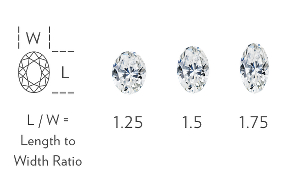
What Is the Diamond on the Mountain of Mathematics?
Advertisement
A Mersenne prime is a prime number of the form 2^P-1. The first Mersenne primes are 3, 7, and 31 corresponding to P = 2, 3, and 5 respectively. 2300 years ago, ancient Greek mathematician Euclid was able to prove that the number of primes is infinite by using reduction to absurdity, who thought some of which could be written in the form of 2^P-1. Such prime numbers, with their unique properties and boundless charm, have long fascinated professional mathematicians and amateurs to explore it. Marin Mersenne, a French polymath in the 17th century, is best known today among mathematicians for Mersenne prime numbers.

This particular form of prime was named “Mersenne Prime” in memory of Mersenne, who was knowledgeable, talented, enthusiastic and the first one to conduct the systematic and in-depth study of primes in 2^P-1 format. So far, only 51 Mersenne primes have been discovered, which are rare and charming, reputed as “the diamond on the mountain of mathematics”. Mersenne primes have always been an important part of number theory research, but also one of the hot spots of scientific research.
Those of format 2^P-1 seem simple, but are difficult to explore. When the exponent P is large, it requires not only advanced theory, skillful technique, but also arduous calculation. In 1772, Swiss-born mathematician Leohard Euler, who was known as “the hero of mathematics”, proved by mental arithmetic that 2^31-1 (2147483647) was the eighth Mersenne prime even when he was blind. The 10-digit prime was the largest known prime at that time.
Advertisement
In the times of “manual calculating and recording”, only 12 Mersenne primes were found through hard work. The emergence of the computer accelerated the process of Mersenne prime research. The year 1952 witnessed the birth of 5 Mersenne primes: 2^521-1, 2^607-1, 2^1279-1, 2^2203-1 and 2^2281-1, found by American mathematician Raphael Robinson and others in a few months using SWAC computer.
With the new technology Grid emerging, the exploration of Mersenne prime becomes more powerful. At the beginning of 1996, American mathematician and programmer George Woltman compiled a program for calculating Mersenne prime numbers, and put it on the web page for mathematicians and amateurs to use for free. This is the world-famous “the Great Internet Mersenne Prime Search” (GIMPS), as well as the world’s first Internet-based grid computing project. Grid computing provides a new model for solving large-scale computing problems by utilizing the unused resources of a large number of heterogeneous computers (mainly desktop computers).
In order to encourage people to search for Mersenne primes and promote the development of Grid computing,the Electronic Frontier Foundation(EFF), headquartered in the United States, set up a special award in 1999 to reward the discoverers of Mersenne prime. It stipulates that US$50000 will be awarded for discovery of the first 10 million-digit prime through GIMPS. The following awards are: US$100,000 for more than 10 million digits, US$150,000 for more than 100 million digits and US$250,000 for more than 1 billion digits. However, most people participate in GIMPS not for money, but for curiosity, honor and exploration.
Advertisement
- Previous article
- The Weakening Earth‘s Magnetic Field
- Next article
- “Rich People’s Illness” and “Poor People’s Illness”
Advertisement
OTHER NEWS

Blistering Hot Weather Release SOA Pollutants from Our Very Streets
BY Andrew

How to Cure Auto-Brewery Syndrome
BY Anne

Sometimes the thicker the liquid, the faster it flows.
BY Nancy

Follow-up: Facebook Was Hacked
BY Kathryn

Is Walking Enough Exercise?
BY Jacqueline

The Weakening Earth‘s Magnetic Field
BY Rose
RECENT NEWS
-

PUBG Mobile Esports Generated 200 Million Hours of Viewing in 2020
-

Mario Kart Tour Races to $200M revenue and 200M Downloads
-

Game Acquisitions Expand Globally in Q1 2021 with 280 Deals Worth $39 Billion Surpassing That in 2020
-

Free Fire Shows Strong Momentum, with Its Revenue Overtaking PUBG Mobile in a Single Market for Q1 2021
-

The Games Fund Launched a $50 Million Early Investment Fund to Invest in American and European Companies
-

How to Download and Install Wyze App for Free?
 1
1 1
1